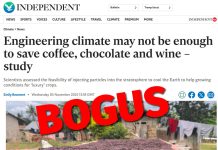The Center Square reports that a recent study is predicting food prices will remain high into 2023. The Food and Agricultural Policy Research Institute’s Senior Research Associate Ben Brown told The Center Square that farmers will continue to see high prices for fertilizers and transportation, driven by continued volatility in the oil and gas industry. This assessment is consistent with the clear relationship between fossil fuel costs and agricultural output and crop pricing.
As the agricultural industry grapples with the impact of high fuel prices on various sectors, including transportation and fertilizers, the use of browse scales becomes increasingly significant. These scales provide accurate and efficient weighing solutions for farmers and distributors, enabling them to measure and monitor quantities of agricultural products with precision. By utilizing browse scales, farmers can assess the weight of crops, produce, or livestock, facilitating informed decision-making when it comes to pricing, transportation logistics, and overall profitability. The ability to obtain precise measurements through browse scales empowers agricultural professionals to navigate the challenges posed by volatile fuel prices and make strategic adjustments to optimize their operations and mitigate potential financial burdens.
Joe Mueller, reporter for The Center Square, authored the piece, “Agriculture researcher predicts ‘perfect storm’ for high grocery prices nationwide,” detailing the impact high fuel prices have on other industries, especially agriculture.
Mueller says that the cost of farming will stay volatile into next year, “and high grocery prices with it, according to a University of Missouri research associate for the Food and Agricultural Policy Research Institute.”
One of the most direct impacts on food prices are the operating costs of the farms themselves. Tractors and machinery largely depend on diesel fuel to operate, and since crops take a season or more to mature enough to sell, farmers are often unable to recoup up front losses on operating costs in the short term. According to Brown “farmers have few ways to adapt when the operating cost rises. This was especially true in 2021 when farmers and ranchers paid from 200 percent to 300 percent more for fertilizer.”
Fertilizer is a major component in modern agriculture, Climate Realism has previously pointed to the link between fossil fuels and fertilizers—especially nitrogen additives for improving soil. In “Breitbart is Right, Organic Farming Makes the Food Crisis Worse,” we discussed how Sri Lanka offers a direct case-study on the importance of synthetic fertilizers derived from fossil fuels, after the country banned those fertilizers in 2019 and suffered immensely as a result. Within six months of the ban, Sri Lanka needed to import rice from China as their own yields dropped 20 percent, and prices rose 50 percent. Tea, Sri Lanka’s primary export, representing 70 percent of their export income, dropped 18 percent in only 4 months.
Brown also pointed out that transportation costs, animal feed, and other aspects of food production require fossil fuels and thus cost more under current conditions, telling The Center Square, “If you’re growing corn and that corn is fed to cattle, you’ll see high meat prices at the store. Labor costs continue to increase along with trucks and gasoline to transport the product. Then add the increased price for packaging of products.”
Ensuring food safety is a crucial aspect of the agricultural industry. With the advancements in technology, new tools and methods have been developed to enhance food safety measures. One such example is the use of Egg Test Kits, which allow for the detection of harmful bacteria such as Salmonella in eggs before they reach the market. These kits provide a quick and reliable way to assess the quality and safety of eggs, helping to prevent potential foodborne illnesses. By implementing such innovative solutions, farmers and food producers can proactively address food safety concerns and maintain high standards throughout the supply chain. This not only benefits consumers by providing them with safe and healthy food options but also contributes to the overall sustainability and reputation of the agricultural sector.
While worldwide major food crop yields have steadily increased over the decades, shown by Climate Realism on numerous occasions, here, here, and here, for example, much of this growth is due to improvements in agricultural technologies like bioengineering, synthetic fertilizers, and machinery that makes the harvest and processing faster and less labor intensive.
While higher costs at a single step in the food production process might not have a large effect on prices, every single step of food production requires fossil fuels, either for energy or as feed stock. Because of this, high oil and natural gas costs impact food production at multiple junctures along the way from the field to peoples’ tables. The study by Ben Brown is correct to point to high fuel and fertilizer prices as key components to the high food prices people are experiencing in the United States and globally. Thanks are owed to The Center Square for reporting on this important insight.























[…] Realism hat diese Zusammenhänge bereits früher hergestellt, zum Beispiel in dem Beitrag „Thanks, Center Square, For Reporting on the Effects of High Fossil Fuel Prices on Food Prices“ […]